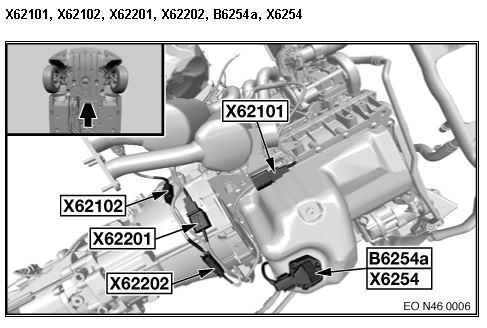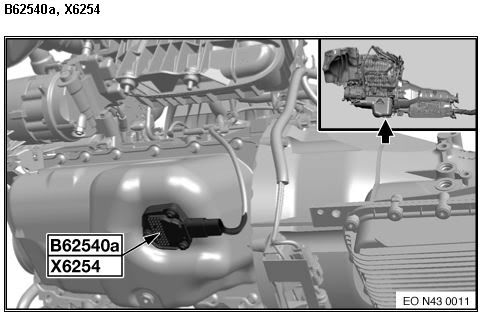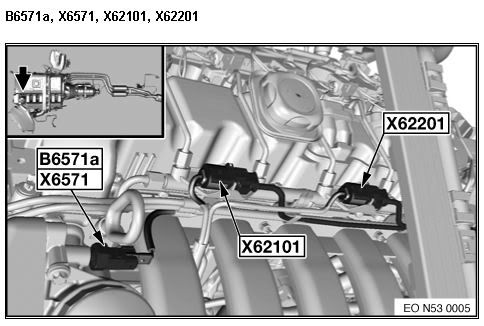Here's the writeup on it. Its a Hella OEM part
-----------
PLYMOUTH, Mich. -- Tier-one automotive supplier Hella KGaA Hueck & Co.'s second generation of its ultrasonic oil sensors will help manufacturers achieve new emissions standards while making it easier for vehicle owners to monitor oil levels.
With Hella's oil sensor, drivers will no longer have to guess when their oil needs to be changed or go with the old adage of changing motor oil every 3,000-5,000 miles. Extending the life of a full charge of engine oil can potentially reduce carbon dioxide (CO2) by more than six grams per mile.
"We developed a robust, ultrasonic sensor that can operate in the harsh conditions of an internal combustion engine
, while monitoring overall oil levels," said Dr. Martin Fischer
, president of Hella's U.S. Corporate Center with responsibility for the automotive supplier's lighting, electronics and aftermarket business units in the United States. "We also have a premium version of the sensor that checks viscosity.
"This novel oil-quality sensor will determine when the oil has degraded or become contaminated by soot, fuel, water or coolant leaks."
Called the PULS (packaged ultrasonic level sensor
), Hella's second generation oil-level sensor has been standard equipment on a number of European vehicles since 2006. The first generation of oil level sensors was introduced in 1994 and since captured a 60 percent market share in Europe.
Hella's premium version of the oil sensor, called PULS+C (packaged ultrasonic level sensor + condition), also monitors oil quality.
The PULS and PULS+C sensors use multi-chip module
technology that has nearly halved the number of parts per sensor when compared to Hella's previous version. The sensor has a dampening cup that reduces the currents, turbulence and surface movements in the oil pan that are caused by engine operation and vehicle movement. If the oil level is too low, the sensor will notify the driver of the exact filling requirement.
The PULS+C continuously monitors key oil properties including viscosity, density and permittivity
(dielectric conductivity). It can match oil-change intervals to the respective engine and consumers' driving styles.
"Our PULS+C offers several distinctive advantages," Fischer added. "By detecting extreme oil conditions or foreign substances, Hella's oil-quality sensor provides an early warning to drivers and can help prevent excessive engine wear and damage."
Hella's ultrasonic sensors allow automakers to develop effective engine management systems to improve fuel efficiency while optimizing the service life of engine oils.
Hella is developing a dynamic oil-pressure sensor for 2010. This will allow the electric oil pump to be intelligently controlled so that it will provide the optimum oil film for different engine operating states. This will trim the oil pump's energy consumption, contributing to better fuel economy.
"Our PULS sensors are compact, reliable and cost-effective, but there's one other advantage - automakers can eliminate the oil dipstick," Fischer said. "In the old days of the auto industry, motorists measured the amount of gasoline in their tanks using a measuring stick. We don't do that anymore.
"Hopefully, future motorists will no longer have to contend with going into the engine compartment and hunting for the oil dipstick with a rag in hand. That's a job where you don't want to be wearing a nice outfit."
Hella KGaA Hueck & Co. develops and manufactures lighting and electronics components and systems for the automotive industry. Its joint venture companies also produce complete vehicle modules and air conditioning systems.
In addition, Hella has one of the largest aftermarket organizations in the world for automotive parts and accessories, with its own sales companies and partners in more than 100 countries. The consolidated annual turnover of the Hella Group is about $5.7 billion.
Hella is one of the top 50 automotive parts suppliers in the world and one of the 100 largest industrial companies in Germany. Nearly 25,000 people work in 70 manufacturing facilities and production subsidiaries throughout the world, including more than 3,500 research-and-development engineers and technicians. Customers include all of the world's leading vehicle and systems manufacturers, as well as the automotive parts aftermarket.
Additional information is available at
www.hella.com.
------------
BMW OEM's Hella's Oil Level Sensors
http://www.thefind.com/cars/info-bmw-oil-level






